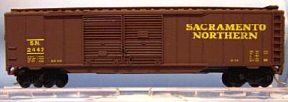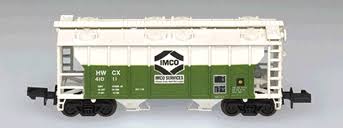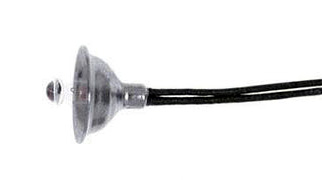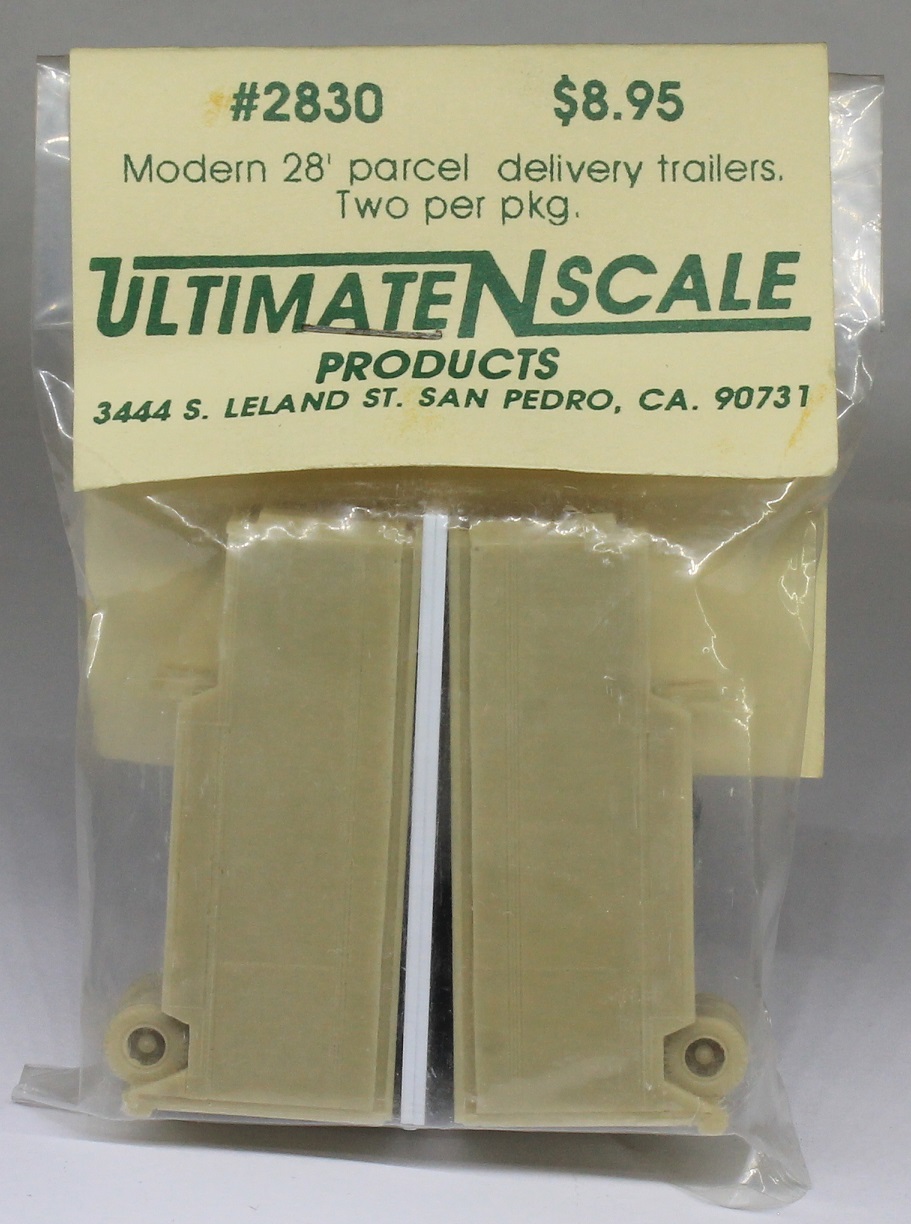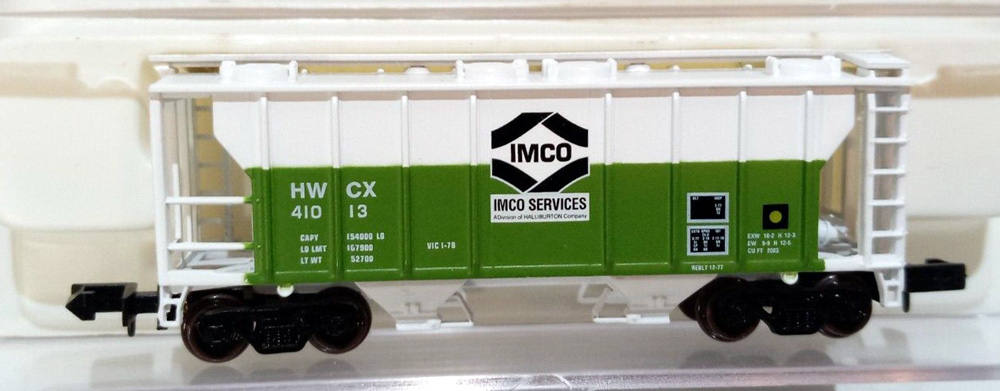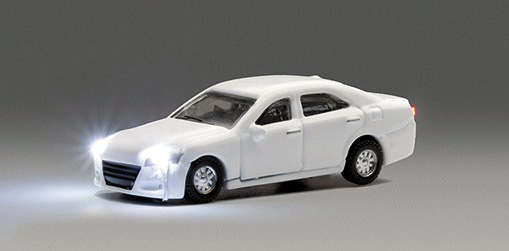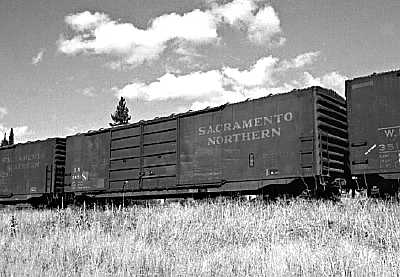Model Information: The first release of this body style was made by Roco in Austria for Atlas in 1967. Later, in 1971, Atlas moved the tooling from Austria to New Jersey and produced their own second release out of their own factory. I presume that Atlas owned the tooling because unlike other Roco models, this one did not later appear as an import by other brands such as Aurora, Minitrix or Model Power. Sometime in the 1990s Atlas again moved the production to China. As of the 2006 run, this model moved to the Atlas Trainman lower-grade range, reflecting its age.
Prototype History: The 50-foot boxcar made its first appearance in the 1930s and steadily grew in popularity over the years, which further improved redundancies by allowing for even more space within a given car. Today, the 50-footer remains the common boxcar size. After the second world war ended, and steel became once again readily available, steel became the go-to choice for construction of boxcars. Pullman Standard and ACF were some of the most prolific builders of these cars.
Double Doors were frequently an option for most of the major North American railcar manufacturers in the 1950s, 1960s and 1970s. These cars were slightly more expensive to produce and maintain, but for many applications allowed faster loading and unloading times.
Double Doors were frequently an option for most of the major North American railcar manufacturers in the 1950s, 1960s and 1970s. These cars were slightly more expensive to produce and maintain, but for many applications allowed faster loading and unloading times.
Road Name History: 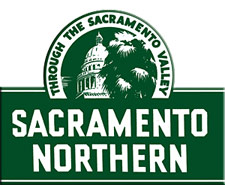 The Sacramento Northern Railway (reporting mark SN) was an 183-mile (295 km) electric interurban railway that connectected Chico in northern California with Oakland via the California capital, Sacramento. In its operation it ran directly on the streets of Oakland, Sacramento, Yuba City, Chico, and Woodland and ran passenger service until 1941 and freight service into the 1960s.
The Sacramento Northern Railway (reporting mark SN) was an 183-mile (295 km) electric interurban railway that connectected Chico in northern California with Oakland via the California capital, Sacramento. In its operation it ran directly on the streets of Oakland, Sacramento, Yuba City, Chico, and Woodland and ran passenger service until 1941 and freight service into the 1960s.
The Sacramento Northern (SN) was an electrified interurban railroad in California that extended 183 miles from Oakland north to Chico. There were two branches, one to Woodland-Colusa, and the other to Oroville. The SN had been two separate interurban companies connecting at Sacramento until 1925. The Oakland, Antioch, and Eastern Railway was a trolley-wire powered line that ran from Oakland through a tunnel in the Oakland hills to Moraga, Walnut Creek, Concord, Pittsburg, to Sacramento. It was renamed the San Francisco-Sacramento Railroad briefly. The Northern Electric Railway was a third-rail powered line that ran from Sacramento north through Marysville-Yuba City to Chico. The train crossed the Sacramento River on the Red Gate Bridge. It was renamed the Sacramento Northern Railroad in 1914. In 1928, the two lines combined to become the Sacramento Northern Railway and came under control of the Western Pacific Railroad which operated it as a separate entity. An extensive multiple-car passenger service operated from Oakland to Chico until 1941 including providing dining car service on some trains. Passenger traffic was heaviest from Sacramento to Oakland. Freight operation using electric locomotives continued into the 1960s. The SN was a typical interurban in that its trains, including freight, ran on downtown city streets in Oakland, Sacramento, Yuba City, and Woodland. This involved multiple car trains making sharp turns at street corners and obeying traffic signals. Once in open country, SN's passenger trains ran at fairly fast speeds. With its shorter route and lower fares, the SN provided strong competition to the Southern Pacific and Western Pacific railroads for passenger business and minor freight business between those two cities. North of Sacramento, rail business was less due to the small town agricultural nature of the region with is small towns and by competition from the SP Railroad.
From Wikipedia

The Sacramento Northern (SN) was an electrified interurban railroad in California that extended 183 miles from Oakland north to Chico. There were two branches, one to Woodland-Colusa, and the other to Oroville. The SN had been two separate interurban companies connecting at Sacramento until 1925. The Oakland, Antioch, and Eastern Railway was a trolley-wire powered line that ran from Oakland through a tunnel in the Oakland hills to Moraga, Walnut Creek, Concord, Pittsburg, to Sacramento. It was renamed the San Francisco-Sacramento Railroad briefly. The Northern Electric Railway was a third-rail powered line that ran from Sacramento north through Marysville-Yuba City to Chico. The train crossed the Sacramento River on the Red Gate Bridge. It was renamed the Sacramento Northern Railroad in 1914. In 1928, the two lines combined to become the Sacramento Northern Railway and came under control of the Western Pacific Railroad which operated it as a separate entity. An extensive multiple-car passenger service operated from Oakland to Chico until 1941 including providing dining car service on some trains. Passenger traffic was heaviest from Sacramento to Oakland. Freight operation using electric locomotives continued into the 1960s. The SN was a typical interurban in that its trains, including freight, ran on downtown city streets in Oakland, Sacramento, Yuba City, and Woodland. This involved multiple car trains making sharp turns at street corners and obeying traffic signals. Once in open country, SN's passenger trains ran at fairly fast speeds. With its shorter route and lower fares, the SN provided strong competition to the Southern Pacific and Western Pacific railroads for passenger business and minor freight business between those two cities. North of Sacramento, rail business was less due to the small town agricultural nature of the region with is small towns and by competition from the SP Railroad.
From Wikipedia
Brand/Importer Information: Aztec Manufacturing is an aftermarket decorator originally based in San Mateo, CA, now in Carson City, NV.
Historically, Aztec was known for their excellent quality aftermarket decorations of other manufacturers' rolling stock. Aztec repainted models by many different manufacturers including Life-Like, Atlas and others.
In the recent years, Aztec's focus is on track cleaning cars DCC-Ready frames for locomotives and high quality pad-printed freight cars.
Following retirement of its owner, Aztec closed its business in 2018.
Historically, Aztec was known for their excellent quality aftermarket decorations of other manufacturers' rolling stock. Aztec repainted models by many different manufacturers including Life-Like, Atlas and others.
In the recent years, Aztec's focus is on track cleaning cars DCC-Ready frames for locomotives and high quality pad-printed freight cars.
Following retirement of its owner, Aztec closed its business in 2018.
Item created by: nscalestation on 2018-06-08 00:43:18
If you see errors or missing data in this entry, please feel free to log in and edit it. Anyone with a Gmail account can log in instantly.
If you see errors or missing data in this entry, please feel free to log in and edit it. Anyone with a Gmail account can log in instantly.


